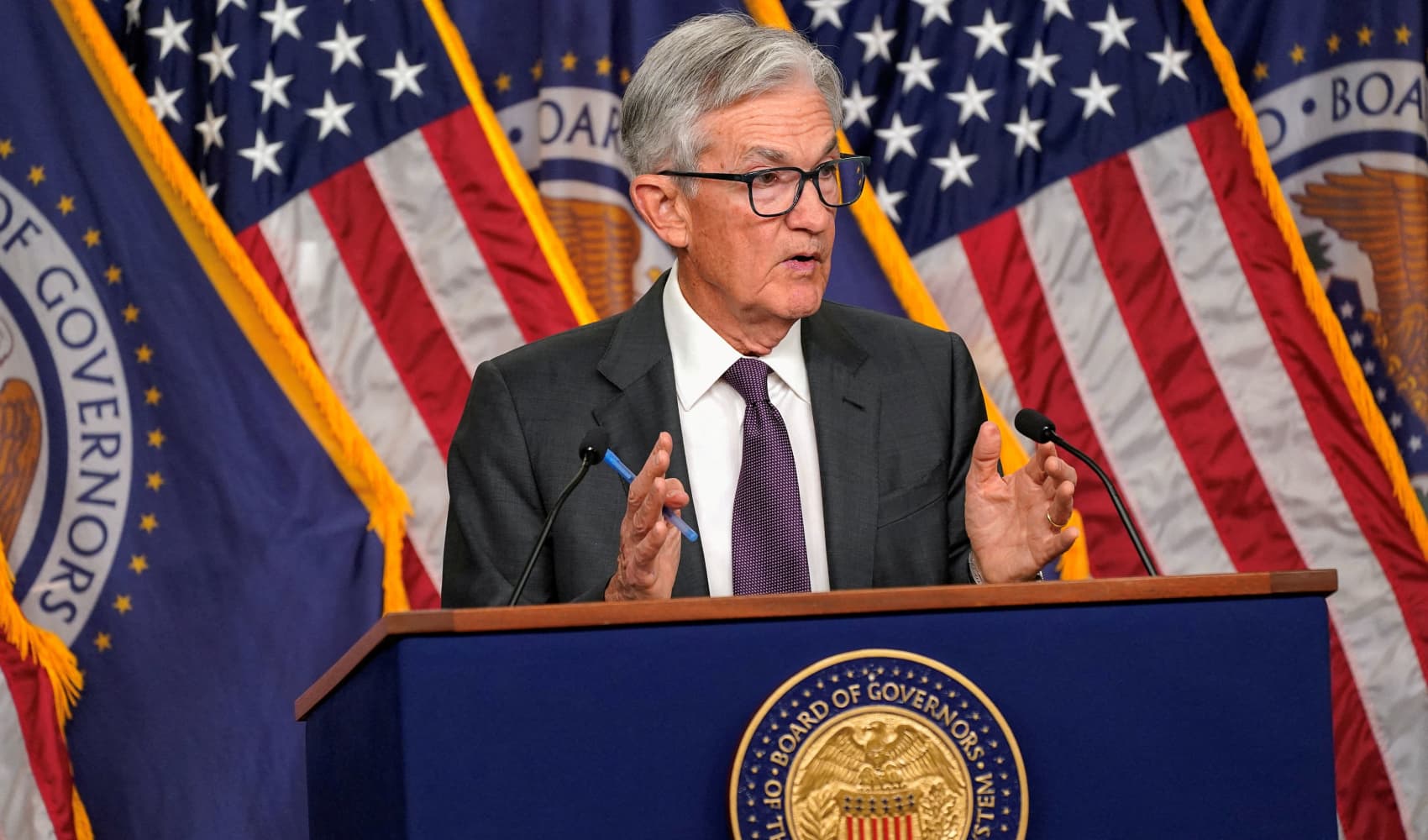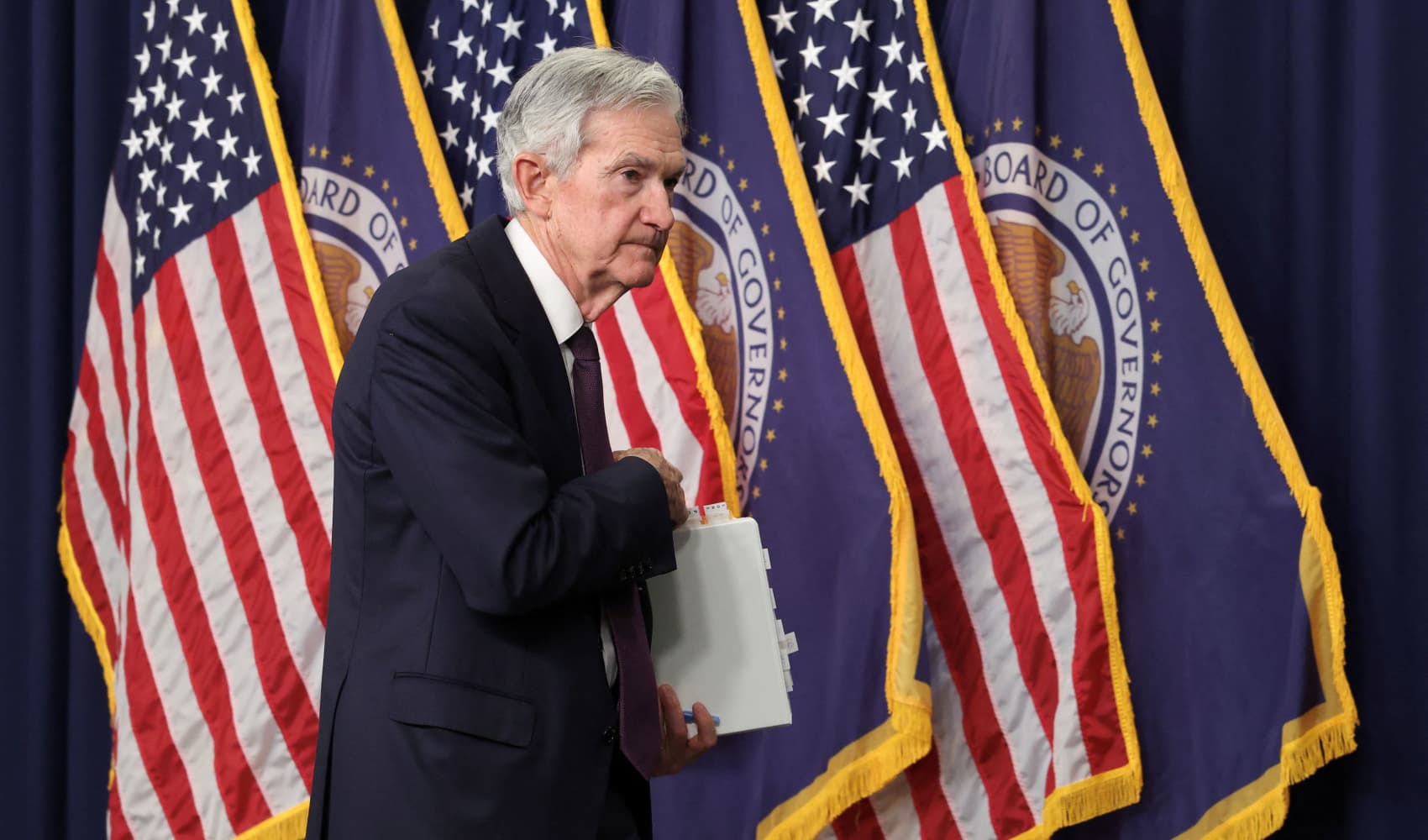Powell's Fed: No Preemptive Rate Cut – What Does It Mean?
Fed Meeting Shocker: Powell Pumps Brakes on Preemptive Rate Cuts!
Introduction: Decoding the Fed's Balancing Act
The Federal Reserve's recent meeting has left economists and investors alike parsing every word, searching for clues about the future of monetary policy. Think of it as trying to decipher a weather forecast for the economy – sometimes sunny, sometimes cloudy, and always a chance of surprise showers. At the heart of it all is Fed Chair Jerome Powell, walking a tightrope between managing inflation and supporting economic growth. But what exactly did the Fed decide, and what does it mean for your wallet? Let's dive in!
The Status Quo: Rates on Hold
For now, interest rates remain steady in the target range of 4.25% to 4.5%. The Federal Open Market Committee (FOMC), the Fed's policy-setting arm, decided to hold off on any changes at their May meeting. This suggests a "wait and see" approach as they evaluate incoming economic data. Are they being cautious, or playing it too safe?
The Fed's Dilemma: Inflation vs. Unemployment
The FOMC statement highlighted a key concern: "the risks of higher unemployment and higher inflation have risen." This signals the delicate balancing act the Fed faces. On one hand, they need to control inflation, which is still stubbornly above their 2% target. On the other hand, they want to avoid pushing the economy into a recession, which could lead to job losses. It's like trying to steer a ship through a narrow channel – too much to one side, and you run aground!
Powell's Stance: No Preemptive Strikes
The big headline from the meeting? Jerome Powell explicitly ruled out preemptive rate cuts aimed at mitigating any potential negative impact from tariffs. "It’s not a situation where we can be preemptive, because we actually don’t know what the right responses to the data will be until we see more data," Powell stated. In essence, he's saying they need more information before taking action. This is a signal that data dependency remains key for the Fed.
Why No Preemptive Rate Cuts? A Deeper Dive
Understanding the "Data Dependent" Approach
The Fed has repeatedly emphasized its "data dependent" approach. This means that their decisions are based on a careful analysis of various economic indicators, such as inflation, employment, and GDP growth. Powell argues that without sufficient data, it's impossible to know the appropriate response to potential economic shocks, like those stemming from tariffs. It's like a doctor refusing to prescribe medication without first diagnosing the illness.
Inflation Still a Concern
Despite some progress, inflation remains a key concern for the Fed. Although it has cooled from its peak, it’s still above the Fed's 2% target. Cutting rates prematurely could reignite inflationary pressures, potentially undoing the progress made so far. Nobody wants to go back to the high inflation of the recent past! It's a risk the Fed seems unwilling to take.
The Problem with Tariffs: Unpredictable Impact
Tariffs can have a complex and unpredictable impact on the economy. They can increase prices for consumers and businesses, disrupt supply chains, and potentially lead to retaliatory measures from other countries. Because the magnitude and duration of these effects are uncertain, it’s difficult for the Fed to predict the optimal policy response. It's like trying to predict the outcome of a game when you don't know all the players or the rules.
Economic Headwinds: Tariffs and Uncertainty
President Trump's tariffs continue to cast a shadow over the economic outlook. The uncertainty surrounding trade policy makes it difficult for businesses to plan and invest. Are we heading for a trade war? The Fed is carefully monitoring the situation.
Signs of Resilience: April's Payrolls
Despite the uncertainty, some economic indicators have been surprisingly strong. For example, April's payrolls showed a robust increase in job creation. This suggests that the labor market remains healthy, which could support consumer spending and economic growth. Is this a sign of underlying strength, or just a temporary blip?
Signs of Weakness: GDP Report
On the other hand, the latest gross domestic product (GDP) report showed a slowdown in economic growth. This suggests that the economy may be losing momentum. Could this be the beginning of a more significant downturn?
What This Means for You: The Impact on Your Wallet
Mortgage Rates
The Fed's decision to hold rates steady is likely to keep mortgage rates relatively stable in the near term. However, future rate decisions will depend on incoming economic data. So, if you're planning to buy a home, it's important to keep a close eye on economic developments.
Savings Accounts
If you're a saver, the good news is that interest rates on savings accounts and CDs are likely to remain elevated for now. However, don't expect significant increases in the near future, unless inflation accelerates.
Investments
The stock market's reaction to the Fed's meeting has been mixed. Some investors are concerned about the potential for slower economic growth, while others are encouraged by the Fed's commitment to supporting the economy. The market's future performance will depend on a variety of factors, including corporate earnings, economic data, and geopolitical events.
The Fed's Tool Kit: What Options Remain?
While preemptive rate cuts are off the table for now, the Fed still has a number of tools at its disposal. These include:
- Interest rate adjustments: The Fed can raise or lower interest rates to influence borrowing costs and economic activity.
- Quantitative easing (QE): The Fed can purchase government bonds and other assets to inject liquidity into the financial system.
- Forward guidance: The Fed can communicate its intentions to the public to influence expectations and shape market behavior.
The Future: What to Watch For
Inflation Data
Keep a close eye on inflation reports. If inflation continues to decline, the Fed may become more open to rate cuts later in the year.
Employment Data
The Fed will also be closely monitoring employment data. A significant increase in unemployment could prompt the Fed to take action to support the economy.
GDP Growth
GDP growth is another key indicator to watch. A continued slowdown in growth could signal a recession and prompt the Fed to lower interest rates.
Expert Opinions: Weighing the Views
Economists are divided on the Fed's current stance. Some believe that the Fed is being too cautious and that preemptive rate cuts are necessary to protect the economy from the potential negative effects of tariffs. Others argue that the Fed is right to wait and see more data before taking action. There's always disagreement among economists!
The Global Context: How Other Central Banks Are Responding
It's also important to consider the actions of other central banks around the world. Some central banks have already begun to cut interest rates in response to slowing global growth. This could put pressure on the Fed to follow suit, even if the U.S. economy remains relatively strong. It's a interconnected world, and central bank decisions often influence each other.
Conclusion: Key Takeaways From the Fed Meeting
In summary, the Fed has decided to hold interest rates steady and is taking a "wait and see" approach as it evaluates incoming economic data. Powell has ruled out preemptive rate cuts aimed at mitigating the potential negative impact of tariffs. The Fed is facing a delicate balancing act between managing inflation and supporting economic growth. The future path of monetary policy will depend on a variety of factors, including inflation, employment, and GDP growth. Keep a close eye on the data!
Frequently Asked Questions
Here are some frequently asked questions about the Fed's recent meeting:
- Why didn't the Fed cut interest rates at this meeting?
The Fed wants to see more data on inflation and economic growth before making any changes to its monetary policy. They don't want to make a decision before getting the full picture. - What are the risks of the Fed's current approach?
The risk is that the economy could slow down further, potentially leading to a recession. They have to carefully consider the risk of doing too little. - How will tariffs affect the economy?
Tariffs can increase prices for consumers and businesses, disrupt supply chains, and lead to retaliatory measures from other countries. The impact is still uncertain. - What is the Fed's target inflation rate?
The Fed's target inflation rate is 2%. They want to keep prices stable and predictable. - How can I prepare for future interest rate changes?
Consider diversifying your investments and making sure you have a solid financial plan in place. Being prepared is always the best strategy.

